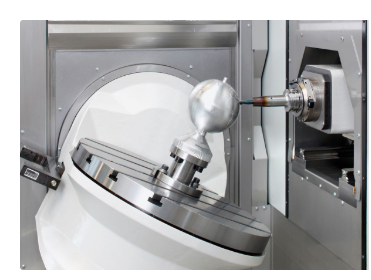Keyword: CNC series Car parts Milling machine Fixture, CNC machining, CNC milling machining, CNC truning, CNC auto spear parts machining, CNC machinery machining parts.
Contact person: Zhixin Chen
Phone: (86) 13825752655
Email: 3012788854@qq.com
Web: www.dgyxlmachinery.com
Factory: Room 102, No. 5, Bang'aofang Xinxia Road, Wanjiang Subdistrict, Dongguan City, Guangdong Province
Hotline:(86) 13825752655

Indexed 5-axis CNC milling
• During machining the cutting tool can only move along three linear axis.
• Between operations the bed and the toolhead can rotate, giving access to the workpiece from a different angle.

Indexed 5-axis CNC milling systems are also known as 3+2 CNC milling machines, since they are using the two additional degrees of freedom only between machining operations to rotate the workpiece.
The key benefit of these systems is that they eliminate the need of manually repositioning the workpiece. This way parts with more complex geometries can be manufactured faster and at higher accuracy than in a 3-axis CNC mill. They lack though the true freeform capabilities of continuous 5-axis CNC machines.
Continuous 5-axis CNC milling
• The cutting tool can move along three linear and two rotational axes relative to the workpiece.
• All five axes can move at the same during all machining operations.

Continuous 5-axis CNC milling systems have a similar machine architecture to indexed 5-axis CNC milling machines. They allow, however, for the movement of all five axes at the same time during all machining operations.
This way, it is possible to produce parts with complex, ‘organic’ geometries that cannot be manufactured at the achieved level of accuracy with any other technology. These advanced capabilities come of course at a high cost, as both expensive machinery and highly-trained machinists are needed.
Mill-turning CNC centers
• The workpiece is attached to a spindle that can either rotate at high speed (like a lathe) or position it at a precise angle (like a 5-axis CNC mill).
• Lathe and milling cutting tools are used to remove material from the workpiece, forming the part.
• Mill-turning CNC centers are essentially CNC lathe machines equipped with CNC milling tools. A variation of the mill-turning centers are swiss-style lathes, which have typically higher precession.
• Mill-turning systems take advantage of both the high productivity of CNC turning and the geometric flexibility of CNC milling. They are ideal for manufacturing parts with 'loose' rotational symmetry (think camshafts and centrifugal impellers) at a much lower cost than other 5-axis CNC machining systems.
To summarize
• 3-axis CNC milling machines manufacture parts with relatively simple geometries with excellent accuracy and at a low cost.
• CNC lathes have the lowest cost per unit, but are only suitable for part geometries with rotational symmetry.
• Indexed 5-axis CNC milling machines manufacture parts with features that do not align with one of the main axes quickly and with very high accuracy.
• Continuous 5-axis CNC milling machines manufacture parts with highly complex, 'organic' geometries and smooth contours, but at a high cost.
• Mill-turning CNC centers combine the benefits of CNC turning and CNC milling into a single system to manufacture complex parts at a lower cost than other 5-axis CNC systems.